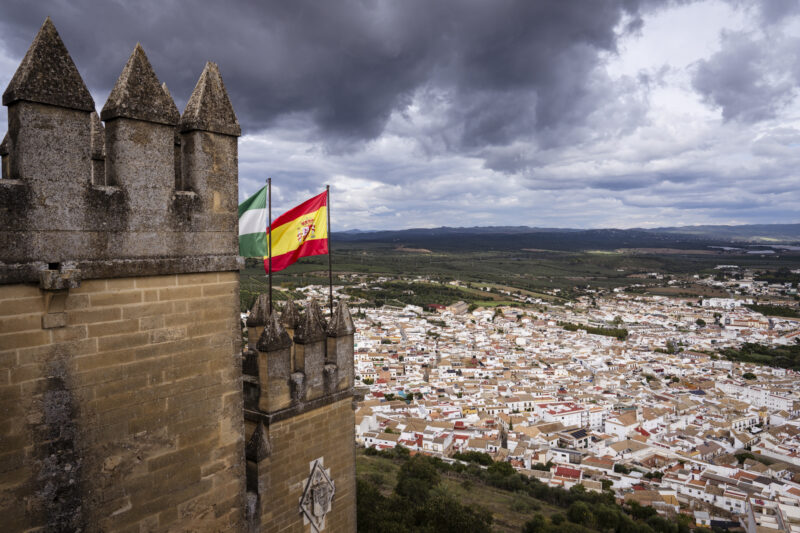8 Must-do’s in and around Córdoba
Córdoba is a city with a long and rich history, dating back to the Bronze Age thanks to its strategic location on the Guadalquivir River. The Romans made Córdoba the capital of the colony of Baetica, and the Moors proclaimed Córdoba the capital of Al-Andalus in the 8th century. Over the centuries, Córdoba was an important political, cultural, and intellectual center, and the Romans, the Moors, and later the kings of Castile all made their mark. Let's walk through the fascinating streets of Córdoba and discover eight places not to be missed.
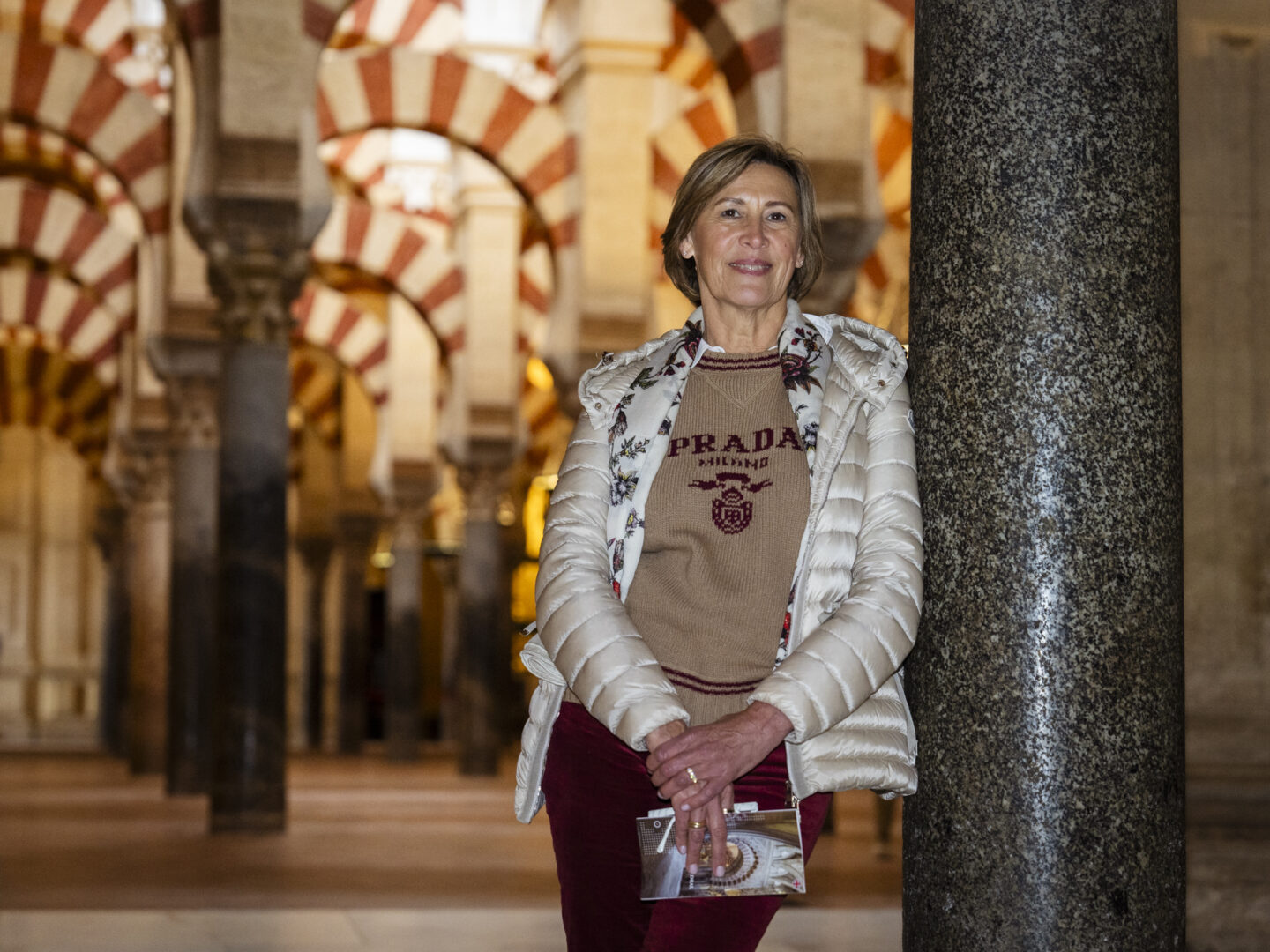
Must-do 1: Visit the Roman temple
Just next to Córdoba City Hall, surrounded by modern shops, you'll find the city's only remaining Roman temple. The temple in Calle Claudio Marcelo has Corinthian columns and dates from the 1st century AD. The monument stands on a platform with an altar in front, in what was once the temple hall.
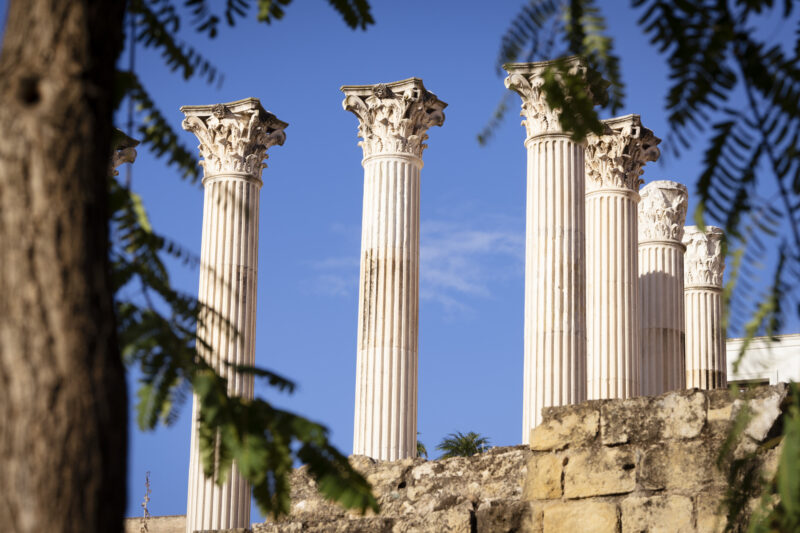
Must-do 2: Explore the city’s colorful patios
Roman villas were built around a central atrium where daily life took place. The Arabs adopted the architectural style and added fountains and flowerpots as decoration. You can still find colorful patios scattered throughout the city today, with lush flowers and plants that are an oasis of tranquility and refreshment.
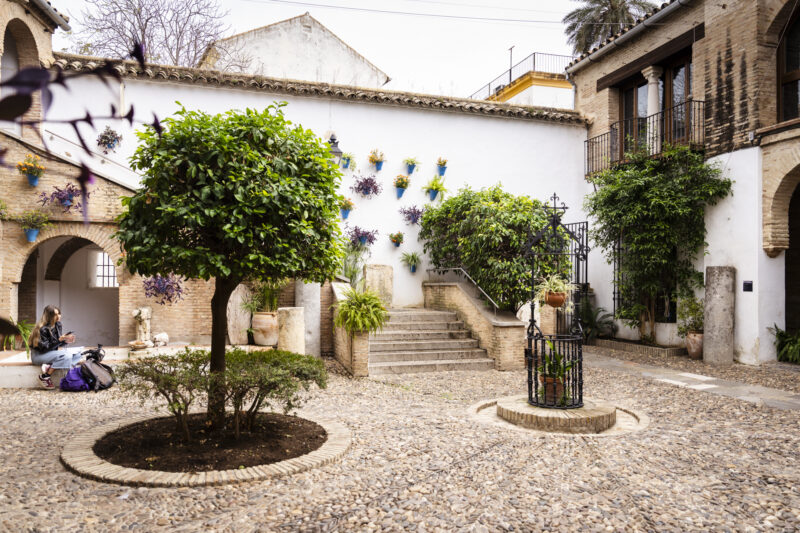
You'll also see blue flowerpots on whitewashed facades in the streets of the old city center. The tiny Calle de las Flores and the little square behind it are famous for this. The view of the Mezquita Cathedral tower from here is absolutely stunning!
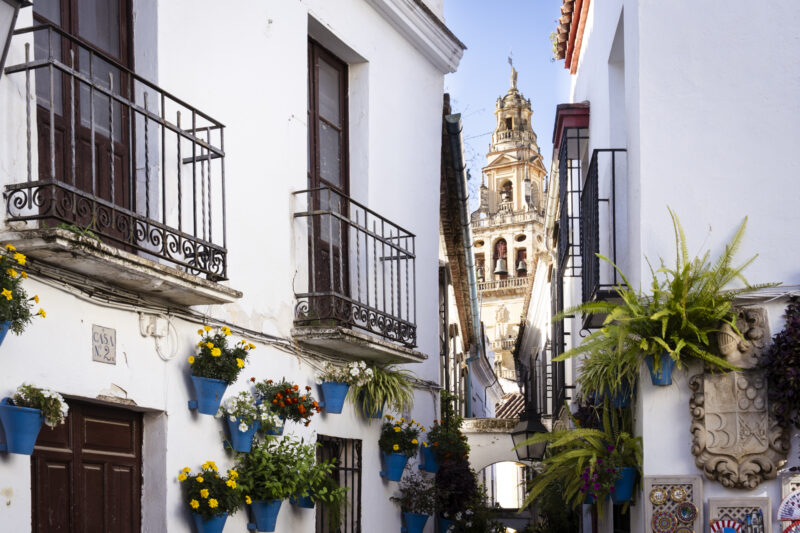
Must-do 3: Walk across the Puente Romano
Córdoba has plenty of reminders of the city's splendor during Roman rule. The Roman bridge over the Guadalquivir was built during the reign of Emperor Augustus. The bridge has seen several modifications over the following centuries, yet it still rests on the original Roman foundations. Halfway across the bridge is a small altar in honor of the archangel Raphael, who saved the city from an epidemic in the 17th century. Across the river, you will find the Torre de la Calahorra, which was built by the Moors as a defensive fortress.
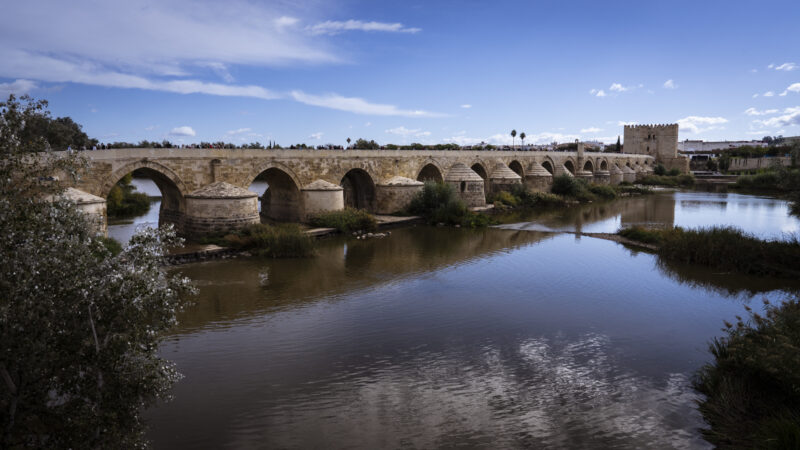
Must-do 4: Stroll through the gardens of the Alcázar de los Reyes Cristianos
The impressive Alcazar de los Reyes Cristianos in Córdoba has all the hallmarks of the city's rich history. The monument was used as a palace, prison and defensive fortress. There are two patios. The one in Mudéjar style with marble floors and water features is particularly stunning.
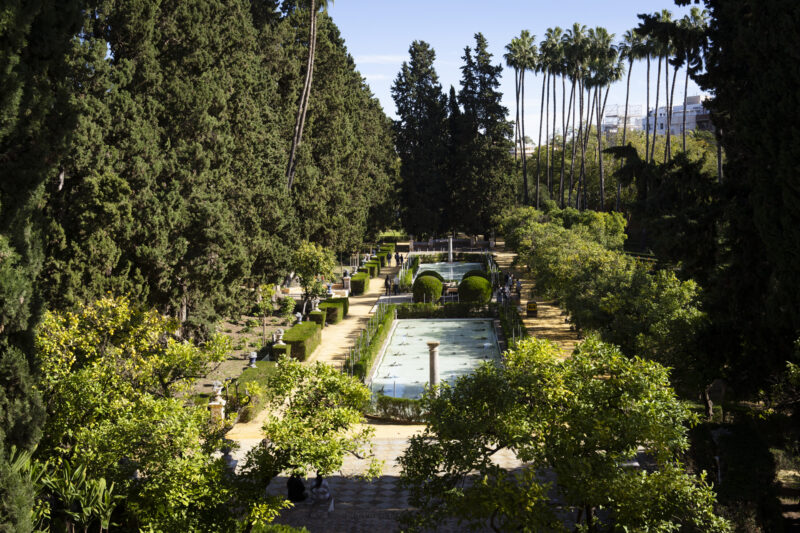
Must-do 5: Visit the Jewish Quarter
A path leads from the Alcázar along a fortified wall to the Puerta de Almodóvar, which is the main entrance to la Judería or the Jewish quarter. You'll find a maze of narrow alleys between the whitewashed houses and pretty squares. Definitely visit Casa de Serafad, a museum dedicated to the history of Sephardic Jews. You'll get a clear impression of the persecution this particular group endured over the centuries.
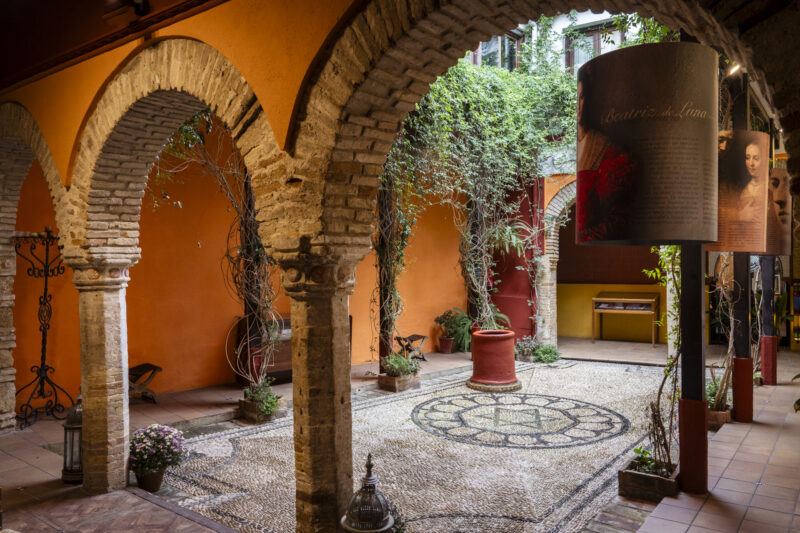
Right in the heart of the Jewish quarter is the Synagogue of Córdoba. This rare medieval temple was built in the Moorish style in the 14th century. It's one of just three synagogues left in Spain that date back to that era. The walls of the synagogue are covered with religious inscriptions of Nasrid origin.
Continue your stroll through the gorgeous patio Andaluz and the neighboring patios of Zoco. This is a small souk with shops offering a range of craft items.
As you head down Calle Averroes, you'll come across the Chapel of San Bartolomé, a stunning example of Mudéjar culture and architecture. The walls are covered with vibrant mosaic tiles and intricate plasterwork. The chapel features a gorgeous portico with three arches.
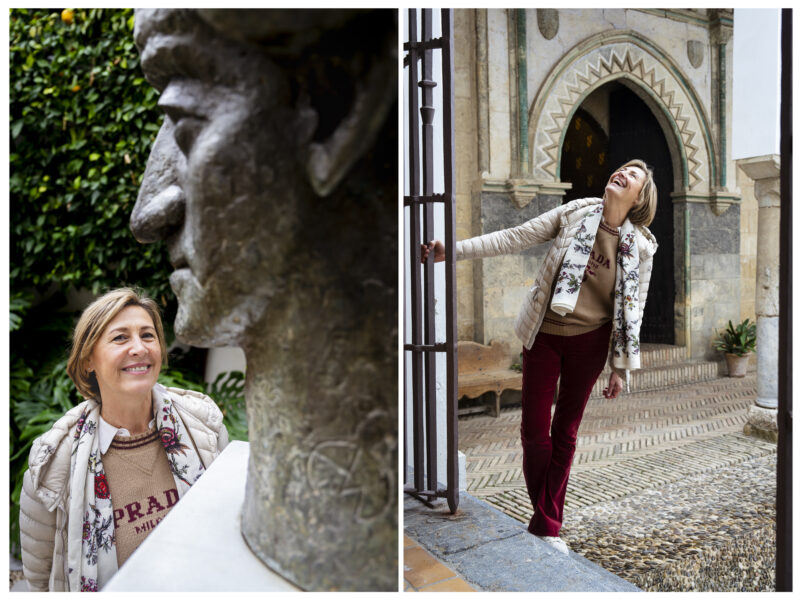
Must-do 6: Visit the Mezquita cathedral
The Mezquita cathedral is the absolute must-see when you're in Córdoba. It's the only place in the world where you'll find a mosque-cathedral that represents a perfect fusion of two major religions.
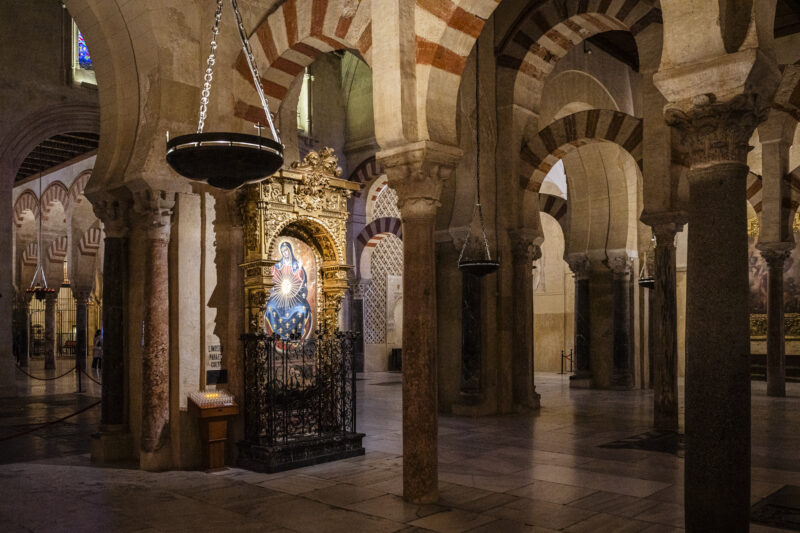
The Moors converted the Visigoth Basilica of San Vicente into a mosque in the 8th century. Some parts of the original basilica are still visible in the first part of the mosque-cathedral. Under various caliphs, the courtyard and place of worship were expanded to their current size.
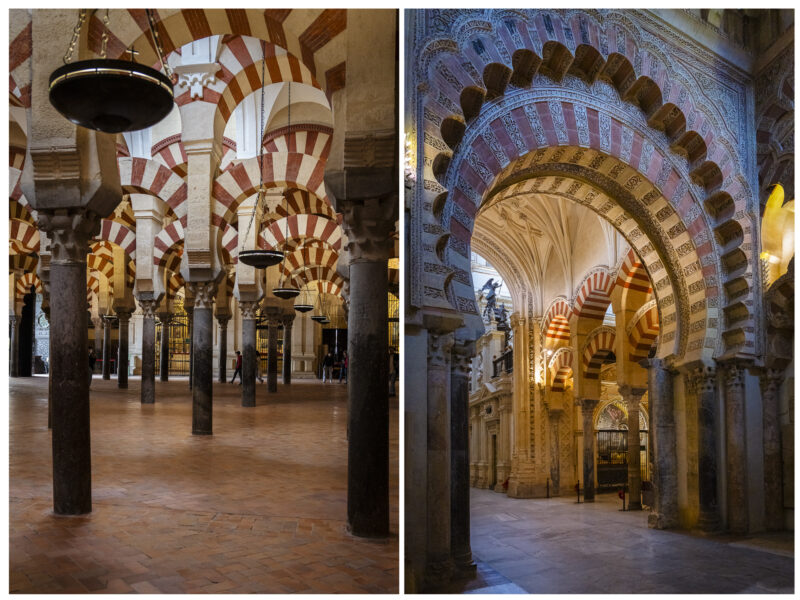
When the House of Castile expelled the Moors, the mosque was consecrated as a Catholic church. Over the centuries that followed, a cathedral was built in the center of the prayer hall. Next to the minaret came the Puerta del Perdón, which is the main entrance to the Patio de los Naranjos, a garden full of orange trees, cypresses, and palms.
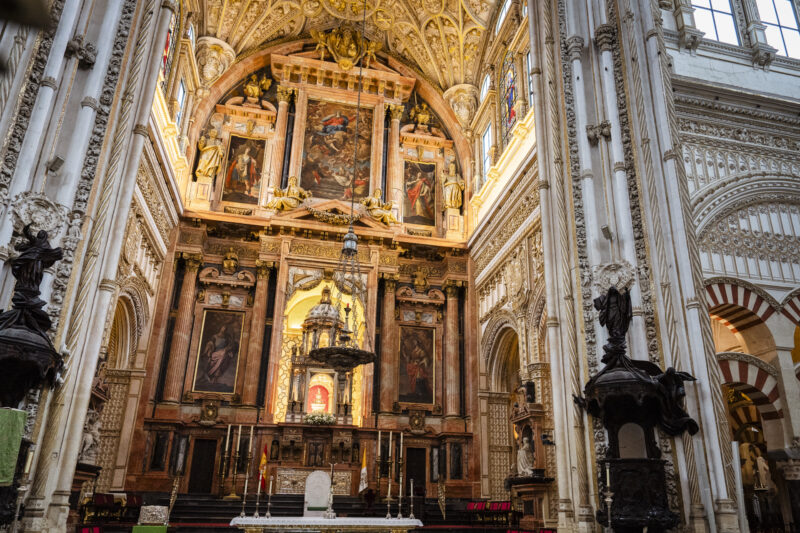
The interior of the Mezquita is a maze of arches, vaults and columns in white and reddish-brown hues. At the heart of it all are the distinctive parts of a cathedral, and they are truly spectacular. You'll find a magnificent transept along with an altar with a choir sculpted in mahogany. And don't miss the Mihrab, which indicates the direction to Mecca for prayer. The decorative mosaics and dome are simply breathtaking.
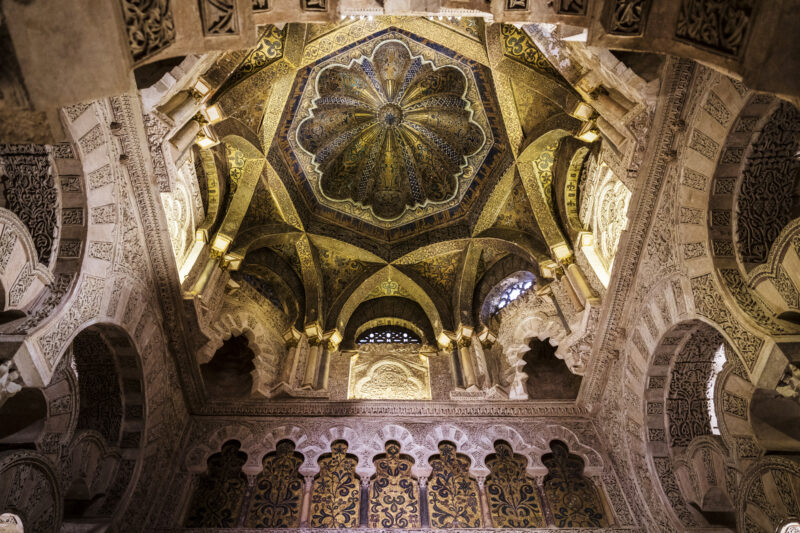
Must-do 7: Outside Córdoba - the Madinat Al-Zahra
Just below the Sierra Morena, near Córdoba, you'll find the historic Madinat Al-Zahra site, a stunning palace city built between 936 and 940. 'Madinat Al-Zahra' translates as 'magnificent city' and it certainly lived up to its name in this strategic spot between the mountains and the Guadalquivir plains.
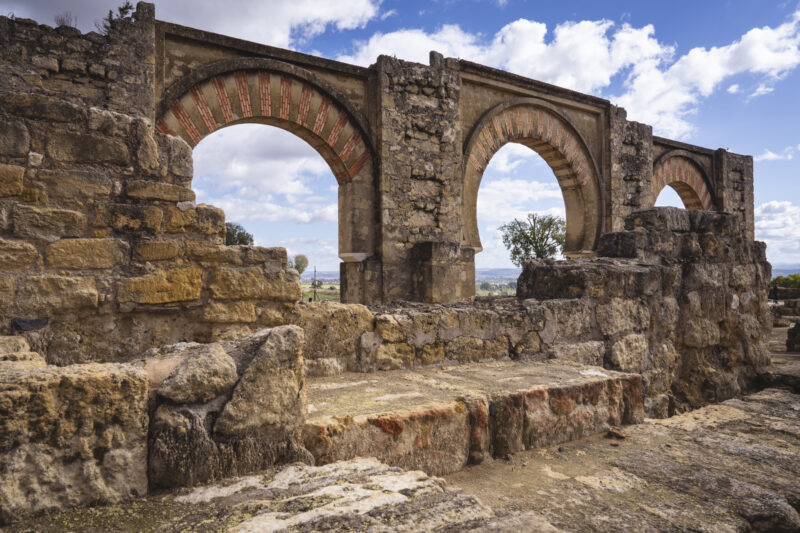
The site served as the headquarters of the Umayyad Dynasty caliphate. In the Islamic tradition, the caliph is the successor of the Prophet Mohamed and, as such, is regarded as the highest authority in Muslim society. The city of Al-Zahra, which was constructed with great splendor, was looted and destroyed after only 75 years of existence. The columns, marble and other decorative elements, as well as a lot of the building materials were used to construct other monuments in Córdoba, Seville and even as far away as Marrakesh. Madinat Al-Zahra was subsequently forgotten until 1910, when the site was discovered and excavated. Currently, only 12% of the archaeological find has been unearthed.
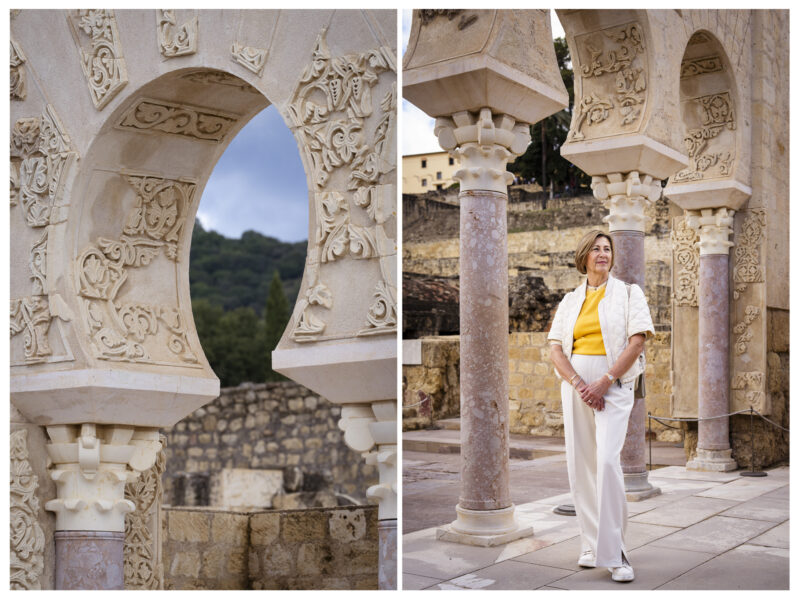
Your tour of the Madinat Al-Zahra site begins at the museum, where you'll get a clear understanding of the history of the Caliphate of Córdoba and the historic city. Then it's just a short bus ride to the archaeological site. The city was designed to fit into the rolling landscape, with different sections arranged in terraces to create a kind of hierarchical structure. The caliph's luxurious quarters were on the highest terrace. From here he could see the city and the gardens, along with the homes of the top officials and the administrative buildings, located on the middle terrace. On the lowest level lived the soldiers and the people. Here the typical bustle of an inner city reigned around the shops, baths and the mosque. The mosque of Madinat Al-Zahra was the first Islamic place of worship in Al-Andalus to be positioned in the right direction towards Mecca.
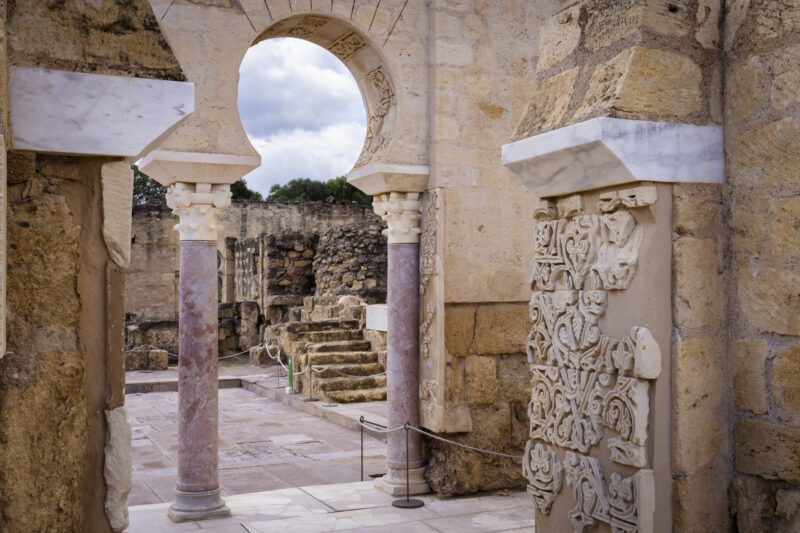
Must-do 8: Outside Córdoba - Castillo de Almodóvar del Río
Just off the road from Córdoba to Seville, you'll find the Moorish castle of Almodóvar del Río, rising from the plain of the Guadalquivir. This 14th-century castle, with parts that date back to the 6th century, is in exceptionally good condition after extensive restoration. A visit to the monument paints a vivid picture of life in a fortified castle during the Middle Ages. From the crenellated towers, you have a breathtaking view of the region.
